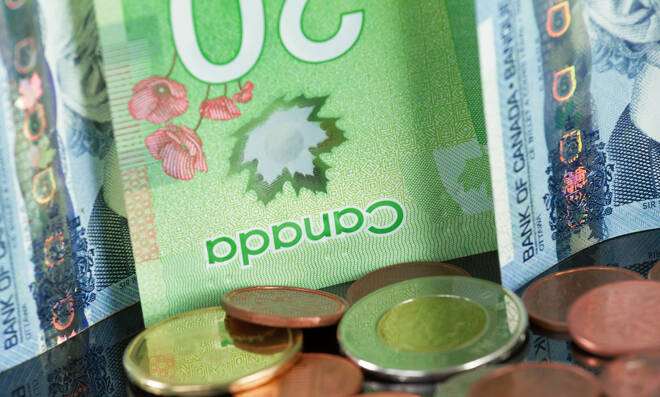Advertisement
Advertisement
USD/CAD: Loonie Gains as Inflation Hits Highest Since 2003, Firm Oil Lends Support
By:
The Canadian dollar strengthened against its U.S. counterpart on Wednesday after the annual inflation rate increased to an 18-year high in August; firmness in oil prices also lent support.
The Canadian dollar strengthened against its U.S. counterpart on Wednesday after the annual inflation rate increased to an 18-year high in August; firmness in oil prices also lent support.
Inflation ticked above the Bank of Canada’s 1%-3% control range for the fifth consecutive month in August, according to Statistics Canada. Last month, the consumer price index grew by 4.1%, the fastest rate since March 2003.
The USD/CAD pair fell to 1.263 today, down from Tuesday’s close of 1.2693. The Canadian dollar lost over 1.2% last month and has depreciated about 0.3% so far this month.
“The Canadian dollar has shown some tentative signs of recovery at the start of this week, but yesterday’s risk-off turn in global markets sent USD/CAD back to the 1.2700 level. We think political uncertainty is currently taking a toll on CAD and partly explaining the divergence with the other oil-sensitive G10 currency, Norway’s krone, which has instead found more solid support of late,” noted Francesco Pesole, FX Strategist at ING.
“We think CAD will struggle to stage a sustained rally before Monday’s Federal election, when the emergence of a potential coalition may ease the negative drag of political noise on the currency.”
Canada is the world’s fourth-largest exporter of oil, which edge higher on low U.S crude inventories fell. U.S. West Texas Intermediate (WTI) crude futures were trading 3.63% higher at $73.02 a barrel. Higher oil prices lead to higher U.S. dollar earnings for Canadian exporters, resulting in an increased value of the loonie.
The dollar index, which measures the value of the dollar against six foreign currencies, was trading 0.13% lower at 92.502. The greenback broadly fell on Tuesday after inflation slowed in August after reaching its highest level in 13 years in July. That raised the question of when the Fed will taper stimulus and hike rates from the current record low.
However, it is highly likely that the world’s dominant reserve currency, the USD, will rise by end of the year, largely due to the expectation of two rate hikes by the Fed in 2023. With the dollar strengthening and a possibility that the Federal Reserve will raise interest rates earlier than expected, the USD/CAD pair may experience a rise.
About the Author
Vivek Kumarauthor
Vivek has over five years of experience in working for the financial market as a strategist and economist.
Advertisement
